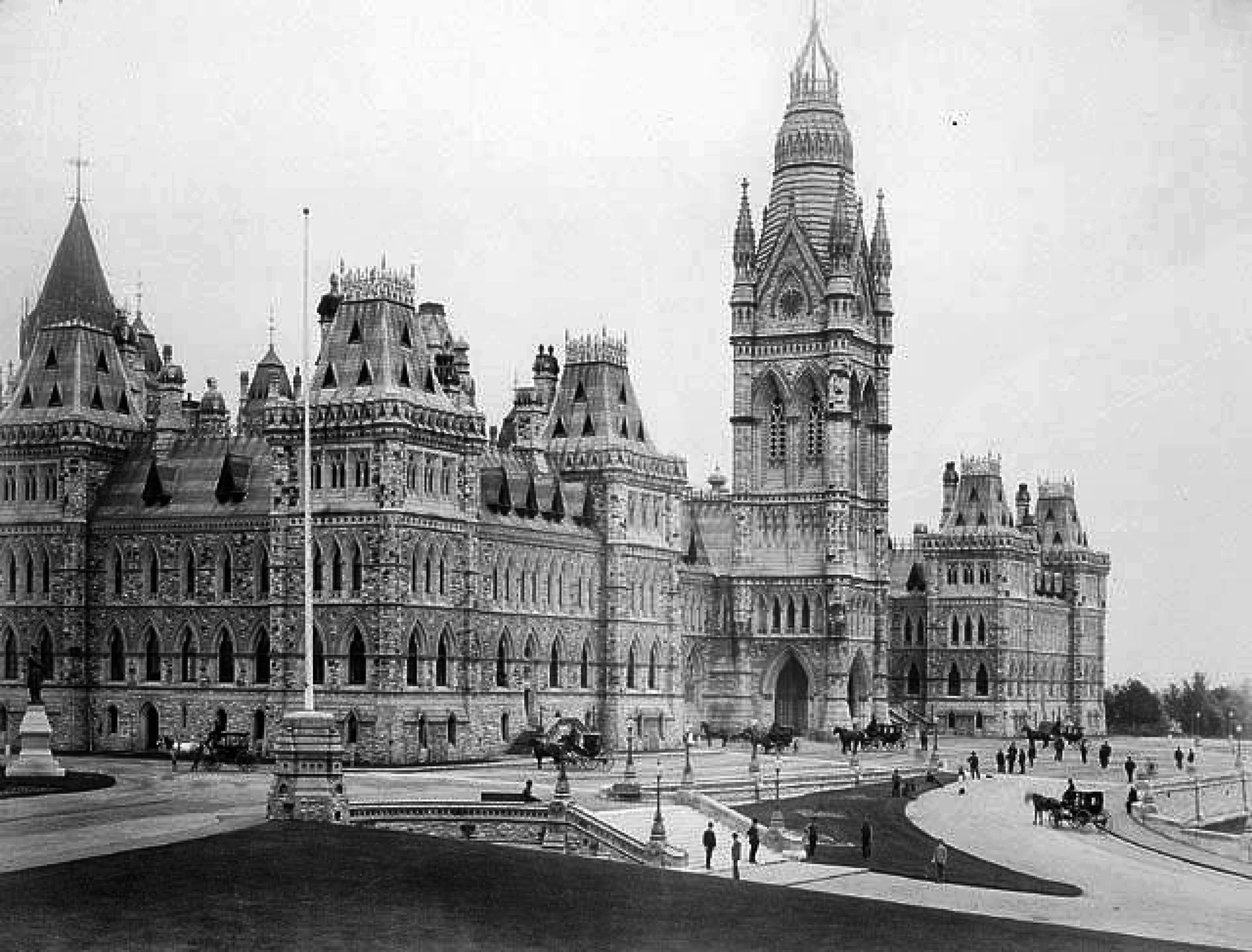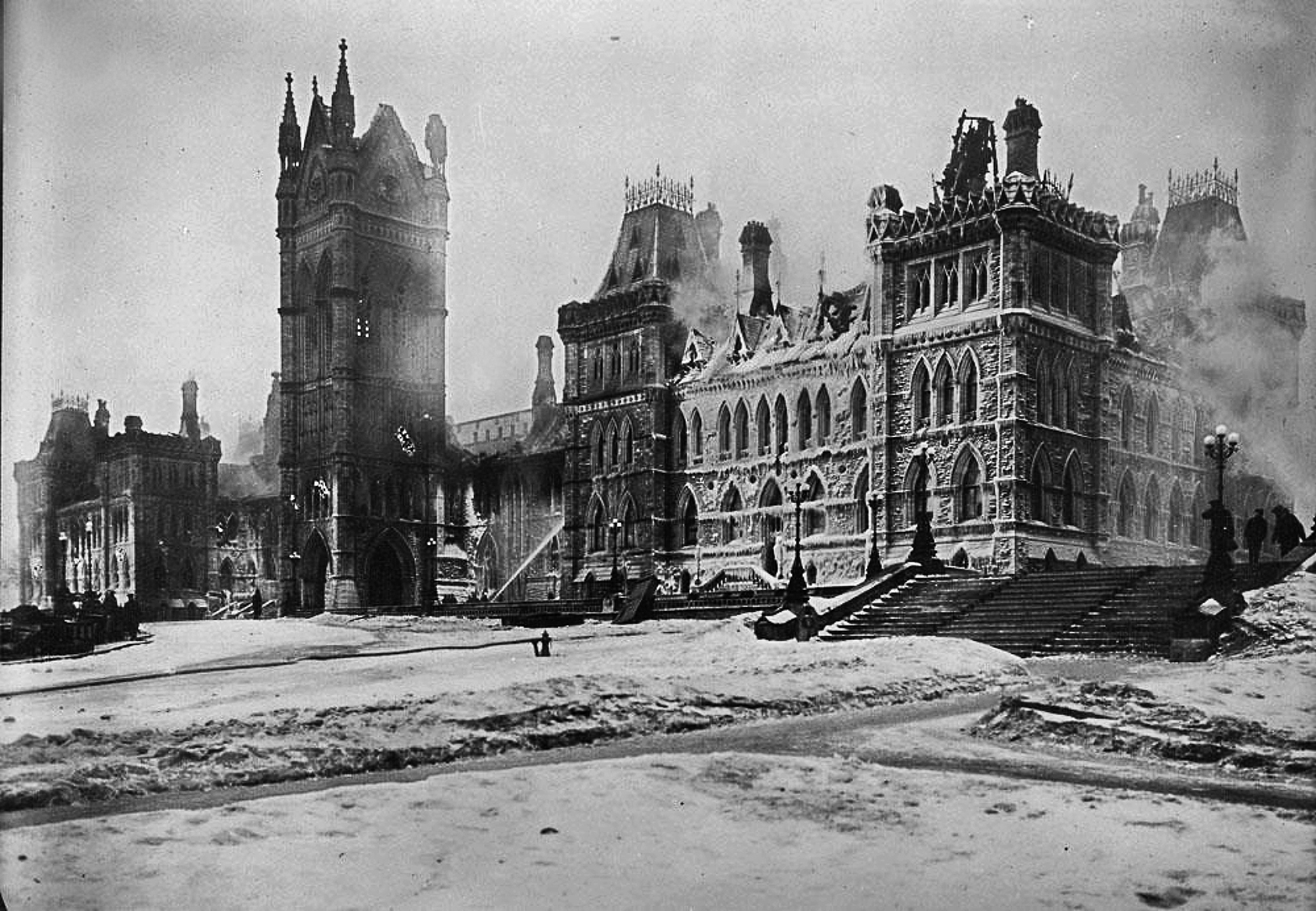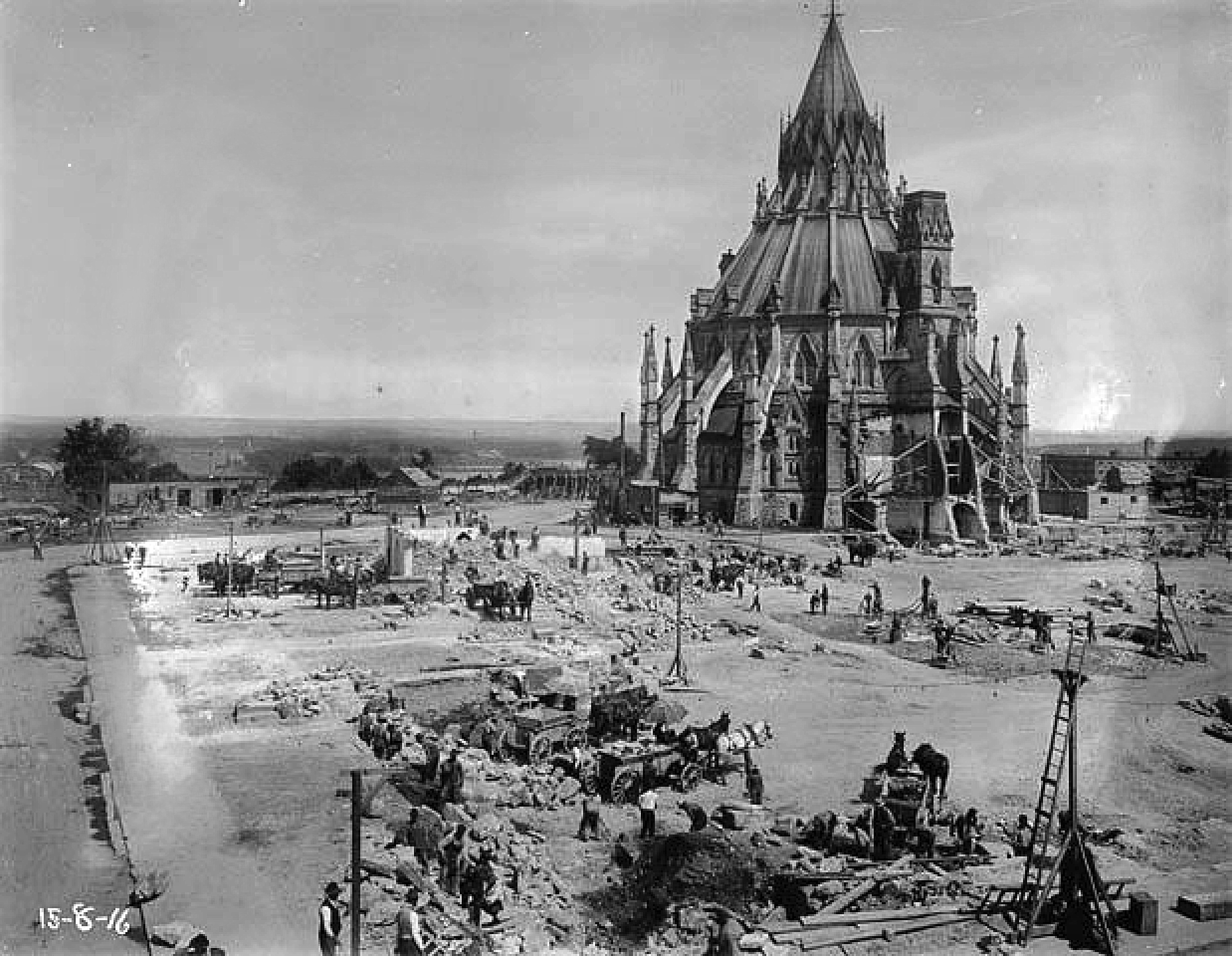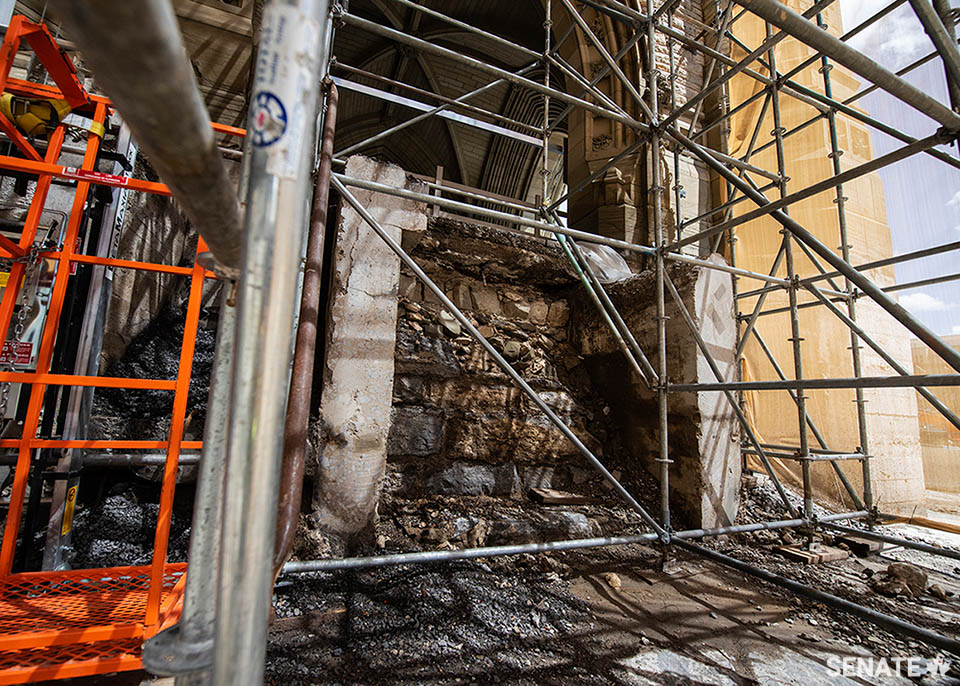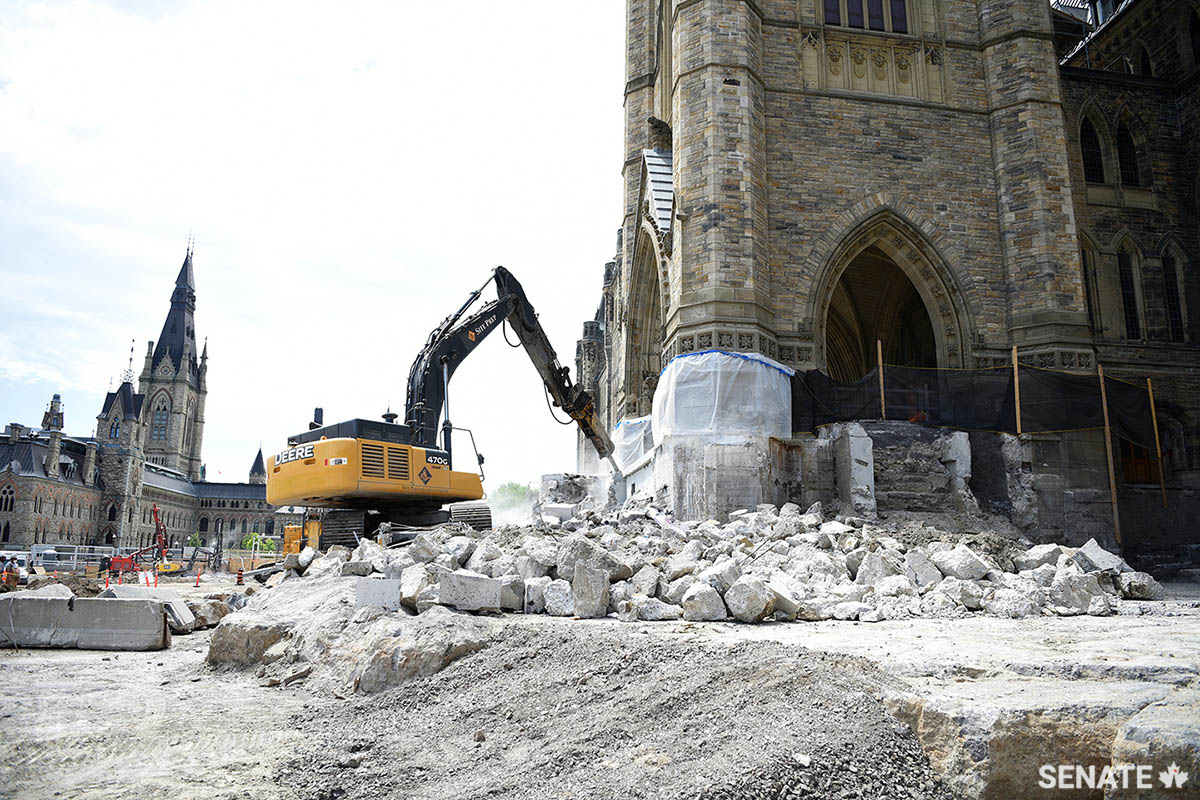The Two Towers: Uncovering Centre Block’s lost foundations

In February 2019, the Senate moved to the Senate of Canada Building, a former train station built in 1912. The Senate will occupy this temporary location while Parliament’s Centre Block — the Senate’s permanent home — is rehabilitated.
Although Centre Block is shuttered for rehabilitation work, Canadians can still experience its art and architecture through the Senate’s immersive virtual tour.
On February 3, 1916, flames engulfed Centre Block and raced up the landmark Victoria Tower. As the clocktower bells struck midnight, the spire came crashing down.
The next day, engineers assessed the smouldering ruins.
The Library of Parliament had miraculously survived but the rest of the structure was beyond salvaging.
By September of that year, Centre Block had been torn down and the last traces of the first tower to grace Parliament Hill disappeared.
A little over a century later, excavation work has uncovered vestiges of the original structure where the Peace Tower now stands: the limestone foundation of the Victoria Tower.
“The new Centre Block was built from the ground up, during wartime, essentially in four years,” said Derek Mes, Structural Project Manager for the Centre Block Rehabilitation Program, which is being delivered by Public Services and Procurement Canada.
“They removed the original foundation where it prevented them reaching bedrock. Where it wasn’t in the way, they just cast the new concrete foundation right against the old limestone one.”
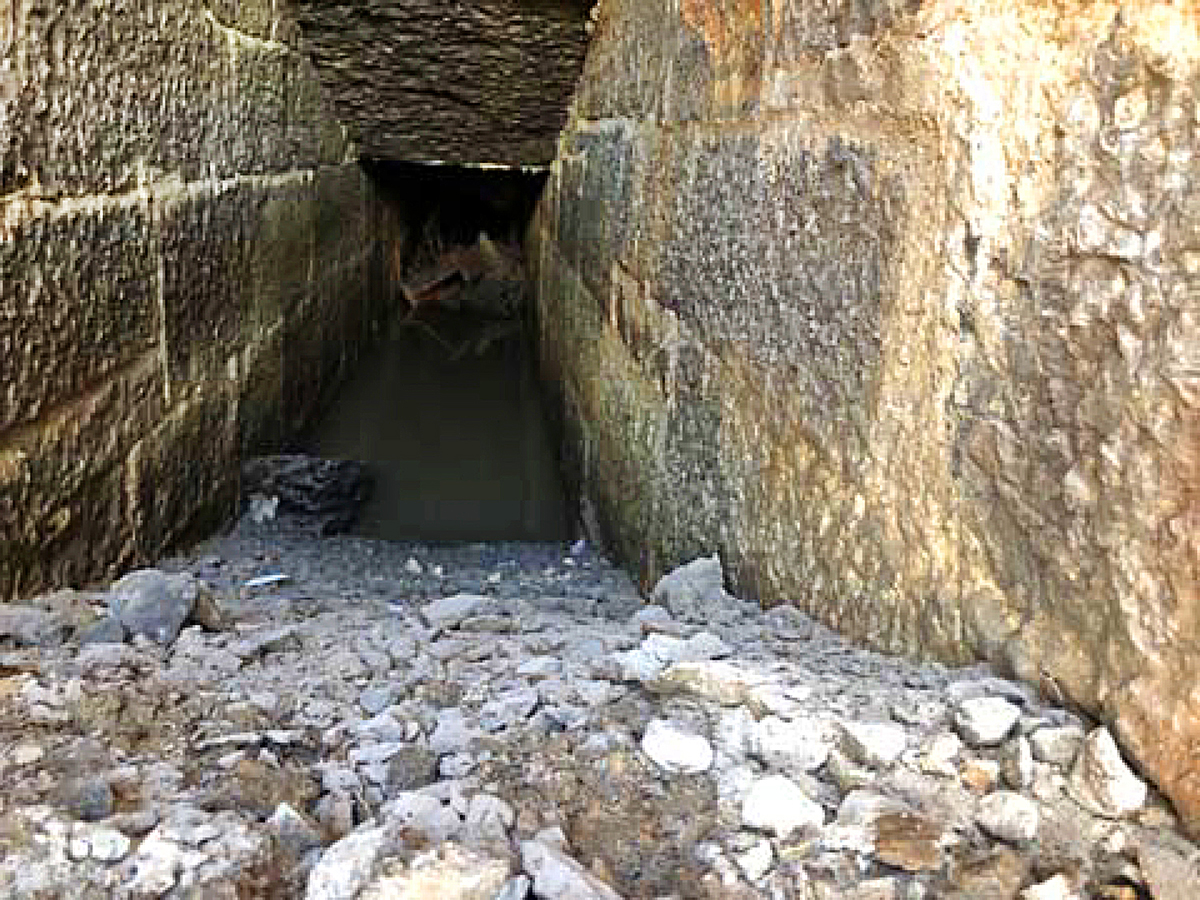
The rediscovery of the Victoria Tower’s foundation came during the biggest heritage rehabilitation project in Canada’s history, and the building’s first comprehensive upgrade since it was constructed in the wake of the 1916 fire.
Two ambitious additions — a sophisticated earthquake-defence system and an underground Visitor Welcome Centre that will connect West Block, Centre Block and East Block — have turned Parliament Hill into a massive excavation zone.
Queen Victoria had selected Ottawa as the nation’s permanent capital in 1858 and, in 1867, the Mother of Confederation signed into law the bill that made Canada a country in its own right.
The Victoria Tower, topped with a crown-shaped turret, honoured Canada’s queen. When its spire was completed in 1873, the tower soared to a height of 55 metres, dominating Ottawa’s skyline.
Its replacement was named the Peace Tower on the suggestion of architect John Pearson, who had conceived it as a tribute to Canadian soldiers lost in the First World War.
It was sleek and imposing, a full 43 metres taller than its predecessor and featuring a 54-tonne, 53-bell carillon inspired by the church bells of Flanders, where 15,000 Canadians had died.
Its intricately sculpted façade showcased symbols that honoured the 50-year-old nation of Canada and its wartime sacrifices, including owls, maple leaves and the sombre figure of a soldier grieving his fallen comrades.
It was while excavating under the entrance to the Peace Tower in the summer of 2020 that archeologists working for Centrus, the lead designer for the Centre Block Rehabilitation Program, discovered remnants of the old Victoria Tower foundation next to the four pillars supporting the Peace Tower.
Workers also found ventilation shafts that had once drawn fresh air into the building.
“You can still see some where they emerge along the escarpment behind Parliament Hill,” said Mr. Mes. “There are a few of these portals with beautifully preserved ornamental stonework.”
This time, all remnants of the Victoria Tower foundation will need to be removed.
“They’re in the way of getting down to bedrock,” Mr. Mes said. “The bedrock will need to be accessed to build the Visitor Welcome Centre.”
However, workers will keep exhaustive records of archeological finds as they emerge.
“On any archeological dig, there are two options — preservation in situ or preservation by record,” said Mr. Mes.
“For the old Victoria Tower, there’s no option but preservation by record. A huge effort goes into recording the foundation for historical record purposes, including photographs, drawings, written descriptions, mapping, and 3-D scanning.”
